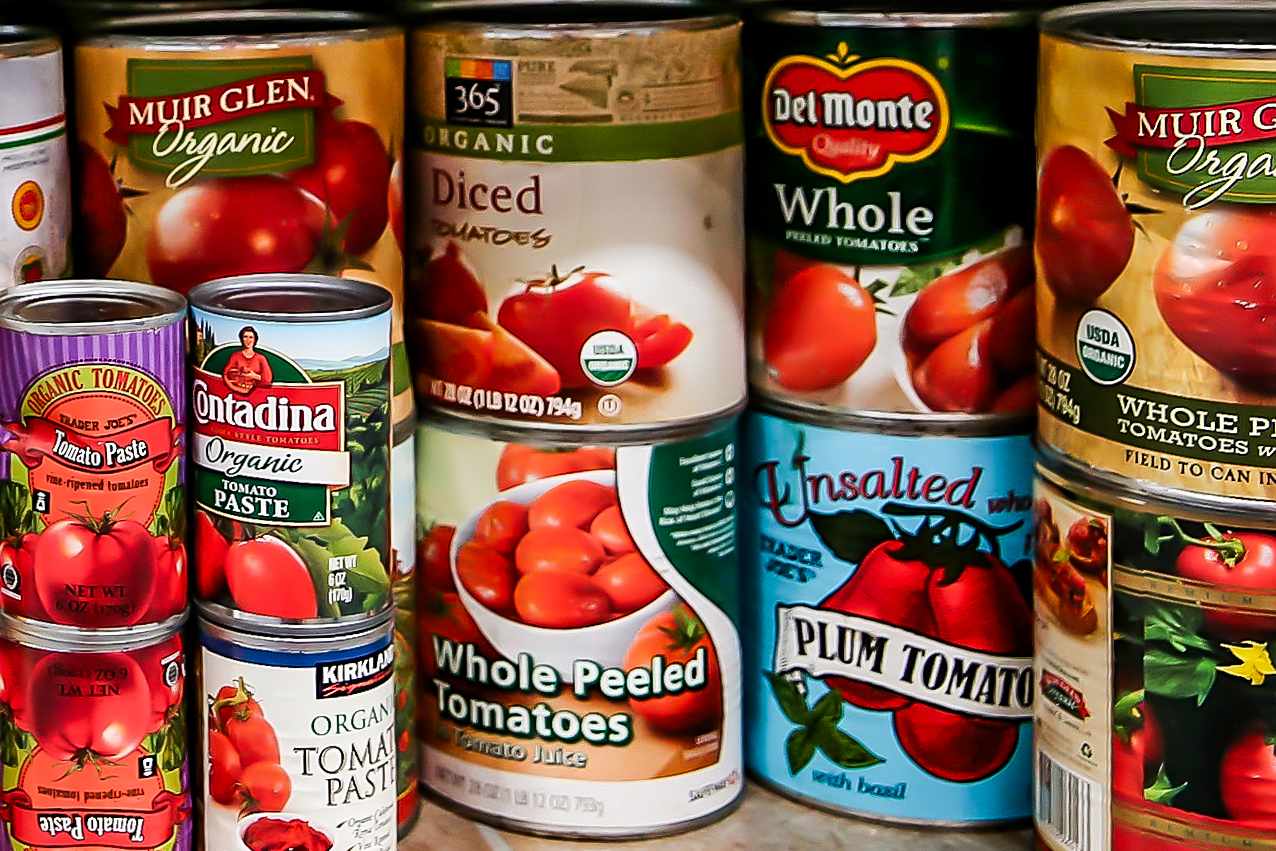:max_bytes(150000):strip_icc():format(jpeg)/Simply-Recieps-Using-Right-Tomatoes-LEAD-01-947d06c66a4241b088fd6ea29f045774.jpg)
Canned tomatoes are the unsung heroes of the pantry, cheap, convenient, and endlessly versatile. The trick is knowing which kind to grab, because each type behaves differently once it hits the pan. Choose the wrong type and you risk turning that dreamy marinara into a watery mess or a sauce so chunky it could double as salsa. Here’s how to dodge the duds and choose the right tomato for the job.
Panel of Pomodoro Enthusiasts
The Mistakes Everyone Makes With Canned Tomatoes
Using diced tomatoes for sauces. Tempting, sure. They’re already chopped! But canned diced tomatoes are often packed with calcium chloride to keep them firm, says Reynolds. Unfortunately, that same perk is their downfall—they stay stubbornly chunky, refusing to melt into smooth, saucy bliss. As Reynolds puts it, the texture of an otherwise divine sauce is thrown off and ends up all wrong.
Defaulting to crushed tomatoes. Saucier than diced tomatoes yet chunkier than full-on tomato sauce, the term “crushed” is the wild west of tomato labeling; it’s not standardized. Sometimes it’s closer to a purée, and other times it’s basically tomato water. Use them if you must, but don’t expect consistent results.
Opting for stewed tomatoes. What even are they, really? Canned stewed tomatoes are pre-seasoned and simmered with herbs, sugar, and aromatics like onions and celery. It sounds helpful, but it’s culinary chaos. “I want as much control over what goes into a dish as possible,” says Warnock. With stewed tomatoes, you’re at the mercy of the brand. Hard pass.
Avoiding whole peeled tomatoes because they’re intimidating. You’re missing out. Whole peeled tomatoes are the gold standard for a reason—brands save their best fruit for these cans. Reynolds swears by their versatility, “using them straight from the can, chopped, puréed, or—my personal favorite—squeezed by hand to fit any need.” She can’t imagine her kitchen without them and calls them her “desert island canned tomato pick.” They’re your all-access pass to perfect sauces, soups, stews, and braises.
Skipping the tomato paste. We get it. Tomato paste is the clingy friend that overstays its welcome in your fridge. Most recipes call for a spoonful or two, but it’s sold in six-ounce cans—what’s a cook to do with the rest? It’s understandable that many home cooks skip the ingredient—why bother?
Enter: the tube. It’s a total game-changer. You can squeeze out a dab for tonight’s stew, then pop it back in the fridge for weeks (or months). “Tomato paste is something home cooks can make a whole lot more use of,” says Warnock. It’s his go-to for deepening tomato flavor in everything from rich confits to slow-cooked sauces, especially when fresh tomatoes are out of season.
Simply Recipes / Mark Beahm
How to Use Canned Tomatoes Like a Chef
Treat canned tomatoes like the power ingredient they are. Once you learn what each type actually does best, your sauces will be silkier, your soups more flavorful, and your kitchen just a little bit more nonna-approved.
For most sauce types, Pixley uses whole peeled tomatoes. “They tend to have the best depth of flavor. You can puree them to create a sauce base or crush them (or even snip them with kitchen shears, right in the can) to create a more irregular texture in places where you want to have pieces of tomatoes.”
Whole peeled tomatoes can take you anywhere: silky marinara, rustic ragù, even pizza sauce worth bragging about. Thanks to the minimal processing and “reserve” quality, sauces made with whole peeled tomatoes will boast the best flavor. Guardione sources these in all shapes and sizes—plum, cherry, datterino, piennolo, and more. “They still have their juice and the full tomato flavor,” he says. “Without the skin, the texture is more pleasant on the palate.”
For the smoothest sauces and silkiest soups without a blender, Pixley pivots to tomato passata, an uncooked, strained tomato purée.
Here’s where diced tomatoes finally earn their keep: That same calcium chloride that ruins a smooth sauce helps diced tomatoes hold their shape beautifully in brothy soups and hearty stews. Use them when you want pops of tomato that stay distinct instead of dissolving.
And finally, the chef’s secret weapon: “Find [a tomato paste] you like and always keep it on hand,” Warnock says. Resealable tubes make that a no-brainer. Reynolds calls it her “dreamy umami go-to,” stirring it into anything that could use a flavor glow-up. Tomato paste, chefs say, adds rich, concentrated tomato depth to just about anything.
Simply Recipes / Adobe Stock



Leave a Reply